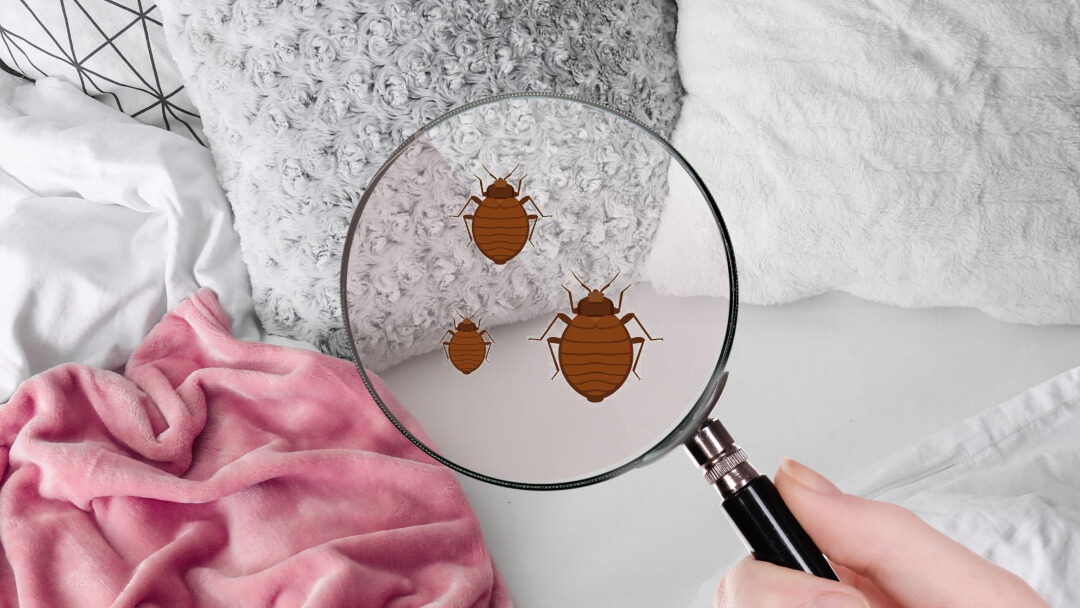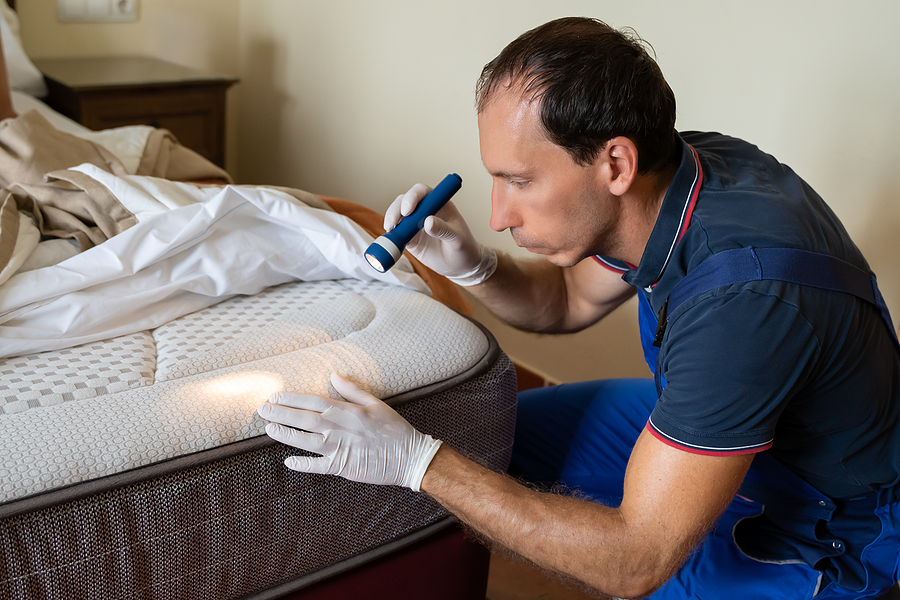Affordable Bed Bug Heat Treatment for Quick and Effective Results
Affordable Bed Bug Heat Treatment for Quick and Effective Results
Blog Article
Get Informed About the Types of Pest Control Approaches and Their Advantages for House Owners
Understanding the different parasite control approaches readily available to homeowners is necessary for reliable pest administration. House owners that are well-informed can make tactical selections that not only address parasite problems however also enhance the general top quality of their living atmosphere.
Chemical Bug Control Approaches
Chemical insect control techniques are a crucial part of incorporated bug management methods for house owners seeking reliable solutions to pest infestations. These techniques entail the application of chemical substances designed to get rid of or hinder parasites that threaten personal effects, health, and comfort. Common chemicals utilized consist of insecticides, fungicides, herbicides, and rodenticides, each tailored to target certain parasites.
The primary benefit of chemical bug control is its fast efficiency; numerous formulations supply instant outcomes, decreasing pest populations dramatically in a short time. Furthermore, advancements in chemical formulas have led to items that are extra ecologically friendly and have lower toxicity degrees for non-target microorganisms when applied properly.

Organic Insect Control Methods
Natural pest control techniques have gotten prestige as home owners look for more secure and a lot more lasting options to typical chemical strategies. Biological bug control methods make use of natural killers, bloodsuckers, or microorganisms to take care of insect populaces effectively. This technique is not just eco-friendly yet also minimizes the threat of injury to non-target types, including helpful pests and wildlife.
Among the most common organic control techniques involves introducing natural predators into the environment. For instance, ladybugs can be made use of to regulate aphid populaces, while nematodes target soil-dwelling pests like grubs. Additionally, parasitoids-- microorganisms that reside on or within a host-- can be used to manage certain insect species by laying eggs inside them, eventually bring about their death.
One more approach is the use of biopesticides, which are originated from all-natural materials such as minerals, plants, or microorganisms (bed bug exterminator). These items can successfully target insects while posturing marginal risk to humans and family pets. In general, biological pest control strategies supply property owners with a reliable means of insect management that straightens with ecological principles, advertising a much healthier living atmosphere while reducing reliance on synthetic chemicals
Mechanical Pest Control Approaches
Mechanical parasite control techniques encompass a variety of methods that physically prevent or get rid of insects without making use of chemicals. These methods are specifically valuable for home owners looking for environmentally pleasant alternatives while ensuring the security of their home.
One typical method is making use of barriers, such as catches, internet, and screens, which prevent parasites from entering homes or specific locations. Installing home window screens can successfully maintain insects out, while making use of physical obstacles around yards can hinder larger parasites like bunnies or deer. In addition, mechanical traps designed for rodents can capture and eliminate these parasites without the demand for harmful substances.
An additional reliable method involves using brooms and vacuum cleaners to get rid of parasites directly from surfaces. Normal cleansing and upkeep can significantly reduce bug populaces by removing food resources and hiding areas. Employing tools like ultrasonic pest repellents can hinder different insects via sound waves that are unpleasant to them but faint to humans.
Social Pest Control Practices
Cultural parasite control practices concentrate on changing the atmosphere and administration techniques to create conditions that are less for pest infestations. These methods are essential in maintaining a well balanced community and reducing the reliance on chemical treatments. By modifying pest identification farming techniques, home owners can successfully hinder insects while promoting plant health.
One typical approach consists of crop turning, which disrupts the life process of parasites by altering the types of plants grown in a particular location (bed bug exterminator). This not just minimizes pest populaces but also improves dirt wellness. Additionally, intercropping-- growing diverse crops in closeness-- can puzzle parasites and lower their capacity to situate their favored host plants
Water management is another essential aspect of cultural techniques. Correct irrigation methods can prevent standing water, which functions as a breeding place for insects and other pests. Furthermore, keeping tidiness in and around the home, such as consistently eliminating debris and food waste, can considerably decrease insect tourist attraction.
Incorporating these cultural methods into an extensive parasite administration method permits house owners to create an atmosphere that normally hinders pests, consequently boosting the efficiency of various other control methods while promoting lasting horticulture and landscape design.

Integrated Insect Administration Approaches
Integrated Bug Management (IPM) represents an all natural approach that integrates various techniques to efficiently handle pest populations while decreasing ecological effect. This methodology integrates biological, cultural, physical, and chemical methods to accomplish lasting pest control. By examining pest populations and their all-natural opponents, IPM highlights monitoring and determining parasites prior to useful source executing control procedures.
Among the core concepts of IPM is making use of limits, which develop the degree of bug task that calls for treatment. This ensures that therapies are applied only when necessary, minimizing the dependence on chemical pesticides. Biological control methods, such as introducing natural predators or bloodsuckers, operate in conjunction with cultural techniques like crop rotation and environment adjustment to interfere with pest life cycles.
Additionally, IPM encourages making use of least-toxic chemical alternatives when intervention is essential, prioritizing products that position very little danger to non-target organisms and the setting. For homeowners, embracing IPM approaches not only enhances the efficiency of parasite management but likewise advertises a healthier living setting, promoting biodiversity and lowering chemical direct exposure. Ultimately, IPM empowers home owners to make enlightened decisions that stabilize bug control with ecological responsibility.
Conclusion
In conclusion, recognizing the numerous bug control methods encourages house owners to make informed decisions regarding pest management. Each strategy-- chemical, biological, mechanical, cultural, and incorporated bug management-- uses distinct advantages that cater to different requirements and preferences.
Comprehending the various parasite control methods readily available to homeowners is essential for efficient pest monitoring.Chemical insect control methods are an important element of integrated parasite management strategies for home owners looking for efficient remedies to pest problems. Overall, biological pest control techniques offer homeowners with an efficient methods of parasite management that straightens with ecological concepts, promoting a much healthier living environment while minimizing reliance on artificial chemicals.
Social insect control methods focus on changing the environment and monitoring methods to develop problems that are much less conducive to pest problems.In conclusion, understanding web the different parasite control techniques encourages house owners to make enlightened decisions concerning pest monitoring.
Report this page